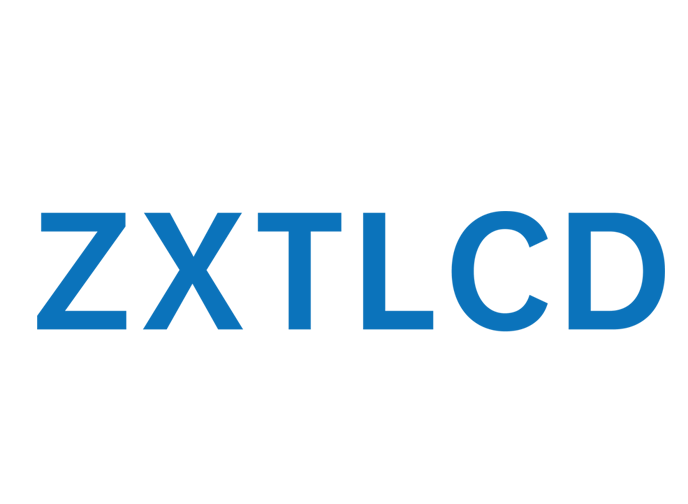Research and Design of Onboard Rail Transit Applications Based on LCD Splicing Display Technology
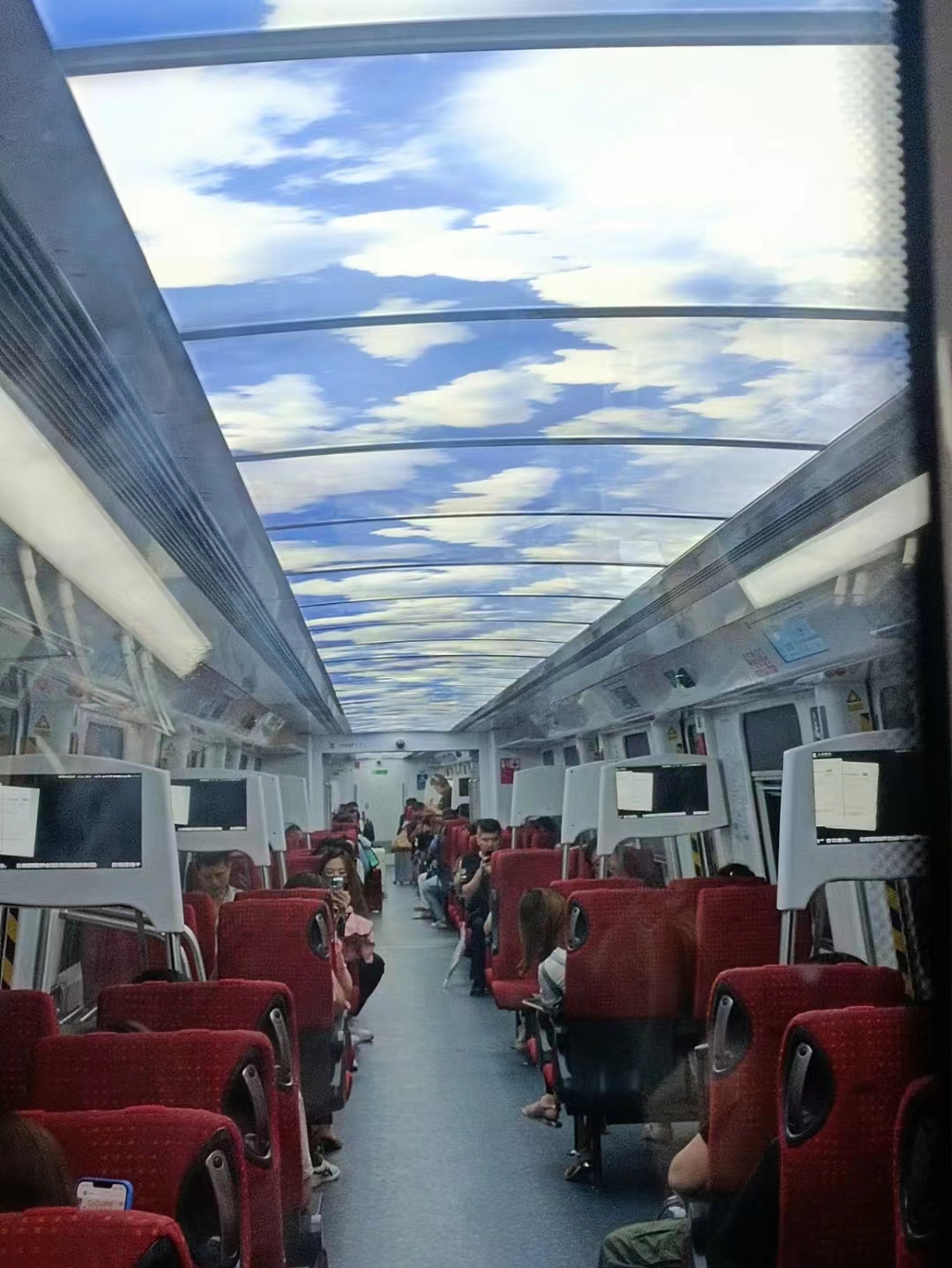
With the widespread application of LCD splicing technology, image region display technology, image transmission, and synchronization technology for large screens, the bottleneck of intelligent and diversified displays in trains has been overcome. The mature application of high-definition LCD display technology, intelligent splicing technology, high-speed network communication, and synchronization technology brings tremendous development potential to the intelligent display of passenger information systems in trains, achieving significant upgrades in train display diversity, interactivity, intelligence, and technology.
Application Analysis of Video Splicing Technology
Currently, video splicing technology is divided into two main streams: LCD splicing and LED (Light Emitting Diode) matrix screen splicing. There are significant differences between LCD splicing display and LED matrix display technology, especially in their display principles, resulting in differences in display effects and functions. However, each technology has its own advantages and disadvantages, especially in indoor displays. This article lists the differences between LCD splicing display and LED matrix display technology in terms of technical and application areas.
Technical Differences
LCD is an industrial display screen that uses liquid crystal display technology, mainly used in industrial and commercial display occasions. It continues a series of display characteristics of liquid crystal technology, including size, brightness, color contrast, etc. LED screens are display screens composed of chip-packaged beads, which are composed of multiple unit boards. They have the feature of no splicing seams and no obvious splicing gaps in the entire screen, but the resolution is relatively low, resulting in a noticeable pixel feel during image playback.
Display Characteristics Differences
(1) Clarity: The resolution of a single LCD screen can reach 1920×1080, making the entire screen very clear. LED screens’ clarity is determined by pixel pitch, and overall clarity is not as high as LCDs.
(2) Brightness: LCD brightness is slightly higher than household TVs, suitable for long-term viewing. LED screens have higher brightness than LCDs, but excessive brightness can be eye-straining. LED screens are more suitable for well-lit places and not suitable for enclosed rooms.
(3) Color Contrast: LCD has high contrast and rich colors, and its color grading is better than LED screens when displaying the same image.
(4) Integrity: LCD has a few millimeters of stitching at the splicing seams, while LED screens have no seams, making LED screens more complete in terms of overall screen effect.
Differences in Application Environments and Purposes
Due to the characteristics of brightness and production processes, LCDs are generally only suitable for indoor use, while LED screens can be used both indoors and outdoors. LCD screens are electronic products and lack waterproof function; once water enters, it can cause electronic short circuits. In contrast, LED screens are different. They are composed of chip-packaged beads and can achieve waterproof effects with slight waterproof measures. The main applications of LCD screens include security monitoring, command dispatch, small and medium-sized conference rooms, exhibition halls, big data analysis, and integrated media platforms. The application of LCD screens in these scenarios is related to their own characteristics, such as the use of industrial-grade LCD panels in security monitoring, and high-resolution for conference rooms or exhibition halls.
LED screens are mainly used in advertising, information dissemination, and large conference halls. Application scenarios include outdoor advertising screens, station and airport schedule displays, and large government conference halls. The reason is that LED screens themselves have no seams, making them more suitable for whole-screen display. Additionally, the viewing distances in the mentioned scenarios are relatively long, which weakens the disadvantage of low resolution.
The choice between LCD and LED screens depends on the display effect and application. If continuous operation is required with emphasis on clarity and stability, and the screen is used for monitoring or conference displays, and low requirements for display and maintenance, then LCDs may be suitable. For large indoor or outdoor occasions, especially for displaying single-screen images, LED matrix screens are more appropriate.
Analysis of Rail Transit Train Applications
Combining the conventional application scenarios of LCD screens and LED screens and the fact that direct installation and application on rail transit trains based on main technical indicators is not possible, customized development and reliability verification assessments for display screens are required. Based on technical indicators from EN 50155-2005 “Railway applications – Specification for electronic equipment used on rolling stock” and GB/T 25119-2019 “Rail transit – Rolling stock electronic devices – Test specification,” the key indicators for display screens are summarized as follows:
(1) Lifespan: The lifespan of passenger information display devices on trains should be no less than 80,000 hours, which is equivalent to stable operation for 10 years.
(2) Outer Dimensions: Due to limited space in train carriages, there are special requirements for the outer dimensions of screens, making it difficult to directly use regular LED and LCD screens.
(3) Electrical Interfaces: Rail transit trains use DC110V (Direct Current 110V) and industrial Ethernet communication. Relevant electrical interfaces need to be customized according to train requirements.
(4) Power Consumption and Control Host Environment: Rail transit trains are powered by batteries and overhead lines, which have technical requirements for low power consumption, low heat generation, and small installation space for onboard passenger information system equipment. The technical characteristics comparison between LCD and LED screens is shown below.
| Feature | LCD | LED |
| Lifespan | Meets requirements | Common matrix LED failures, |
| Dimensions | Customizable | Convenient matrix assembly |
| Electrical Interface | Customizable | Customizable |
| Resolution | Clear | Visible granularity at close distances |
| Power Consumption(W/㎡) | < 45 | >200 (1.25mm full-color) |
| Controller | integrated, compact | Separate controller, larger size |
| Heat Dissipation | Low | High |
| Estimated Cost ( $/㎡) | < 600 | >5000 (1.25mm full-color) |
| Overall | Suitable for applications | Unsuitable for application |
Research on LCD Splicing Technology for Train Passenger Information System
Based on the appearance dimensions, application scenarios, and displayed content of conventional train LCD screens, this article designs a screen segmentation, uploading, and synchronization through embedded system software to achieve splicing display. This new display technology is installed and applied on rail transit trains to enhance passenger comfort with the new concept of smart trains. The design architecture is shown below. Applications of LCD on smart trains include the following aspects.
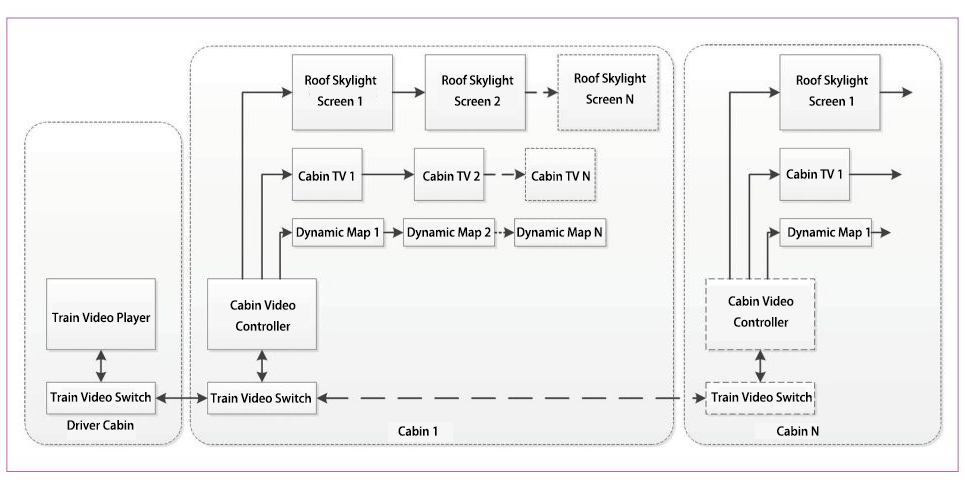
(1) Enhanced Passenger Guidance Services: Using the new LCD splicing technology, achieve full-screen panoramic display effects on the train’s roof, ends, and above the door area.
(2) Enhanced Video Entertainment Services: Add splicing display animations, scrolling subtitles, and safety guidance to passenger cabin TVs to achieve interactive and guiding display effects.
(3) Enhanced Smart Display Services: Combine the large single visual area of the train roof’s conventional white ceiling with innovative LCD ceiling technology to realize intelligent scene projection on a large area of the roof, creating themed carriage scenes.
System Design
This article is based on three dynamic map displays and one control terminal for system design. The control terminal is the server, and the three dynamic map displays are clients. The control terminal calls local resources and designs logic according to different resource types. For example, when the control terminal sends video resources to the dynamic map displays, it captures each frame of the video, divides it into three parts, performs stream processing and encoding, and then uses the Transmission Control Protocol (TCP) for multi-network application layer transmission in the wireless network to send the split data to the dynamic map displays. The workflow is shown below.
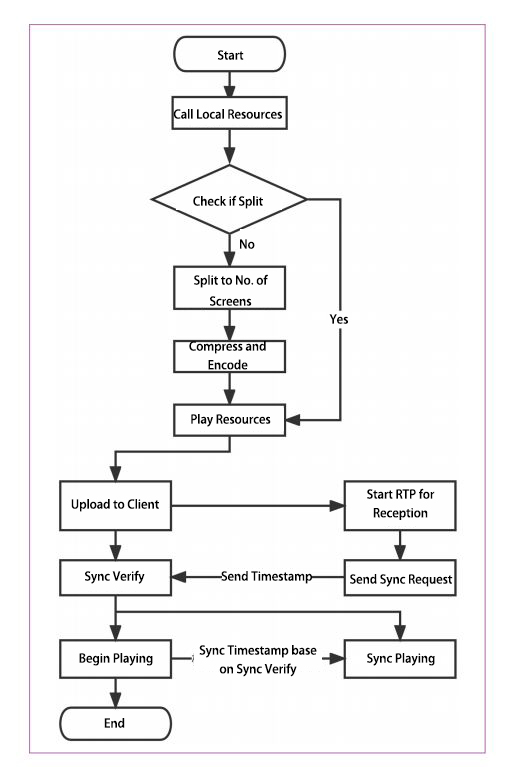
Resource Segmentation
Regarding resource segmentation technology, the MP4 format video on the control terminal is used as an example for explanation. This study divides the video into three parts. Assuming the video resolution is Full HD 1080p, it is divided into 3×640×1080 and transmitted using the 802.11n standard with a bandwidth of 150 ~ 300 Mbps. For a bandwidth of 150 Mbps, the transmission rate is 17.5 ~ 37.5 MB/s. Through compression and interlaced refresh methods, the transmission rate is increased by about 4 times. Under the 802.11n protocol, 1920×1080 can achieve 15 ~ 30 frames/s. For the MP4 format, it is divided into 18 frames per second to achieve smooth video playback. The controller calls local video resources, first obtains each frame image. Secondly, the obtained frame image is displayed by 1:1:1 proportionally to show the source image segmentation. The segmented image is separately encoded and compressed. One of them is decoded, and the other is transmitted to the LCD for display. The decoded display of the image is shown below.

Real-time Transmission
Since real-time transmission is sensitive to bandwidth and delay, the Real-Time Transport Protocol (RTP) is used to transmit real-time audio and video. RTP is a high-speed real-time transmission protocol for multimedia data streams, used for one-to-one or one-to-many transmission. On the lower-level connection-oriented and connectionless transmission protocols, the Network Multicast Communication Protocol (UDP) is generally used for transmission. For 1080p MP4 format videos, capturing video images at 18 frames per second, then sequentially segmenting the images, dividing each image into three parts, the video controller sends the segmented and encoded images to all LCDs of the splicing display group at a speed of 18 frames per second. Each LCD receives the data based on its own position and image coding ID, and after receiving the data, uses the decoding program provided by the embedded system of the LCD screen’s built-in control board to decode and display the received data, making the image a playable streaming video frame.
The LCD’s built-in mainboard can run an embedded Linux system (such as Rockchip RK3399) and has encoding and decoding capabilities for JPEG, PNG, GIF, and BMP image formats, supporting encoding and decoding of audio formats like 3GP, WAV, and MP3, and supporting encoding and decoding processing capabilities for video formats like 3GP, H.263, H.264, and MP4. In terms of compression ratio, H.264 is 1 time higher than H.263 and MPEG4, which is beneficial for storing more video data. In terms of network transmission, the packet-oriented coding method is more conducive to packaging data for transmission over the network.
This article uses the H.264 encoding method to transmit data, and uses Java’s JNI technology to write H.264 functions through C/C++. The C/C++ source code is compiled and compiled into library files using Make, and the embedded system calls the library files to achieve the calling and display of H.264 encoding formats.
Time Synchronization
Because the LCD needs to preprocess the incoming data block, the data received should be delayed for a period of time before playback. The delay time needs to be long enough to meet the synchronization requirements of video playback. The delay time will change with the network conditions, so packets that arrive after the delay time will be lost. This technology minimizes playback delays with the lowest possible dropout rate to improve the real-time transmission of data. The specific synchronization mechanism is shown below.
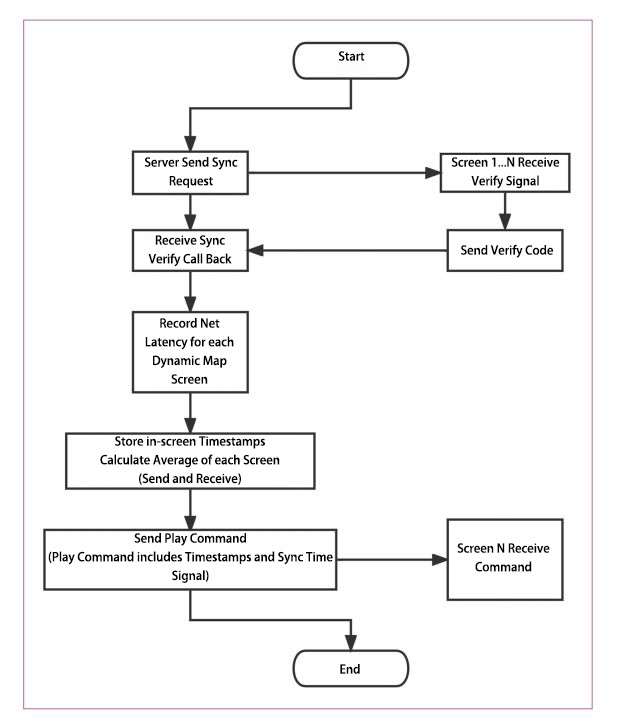
Experimental Results
Based on the appearance dimensions, application scenarios, and displayed content of conventional train LCD screens, the dynamic map bar screen can achieve screen segmentation and splicing display. Standard-sized LCDs can achieve region animation interactive scene splicing displays. Specifically:
(1) Bar Screen Splicing Display: The train’s dynamic map display is a long bar-shaped display that can use a full-side LCD splicing display to increase the dynamic and three-dimensional sensation of the carriage.
(2) Standard Passenger Cabin TV Splicing Display: 3-5 21-inch LCD screens are installed on one side of the train car, which can use splicing technology to overlay and splice animations (trains, dragons, etc.) or scrolling subtitles on train videos. This provides passengers with clearer visual guidance during travel or as the train approaches the station. The spliced display of animations and subtitles on passenger cabin TVs is shown below.
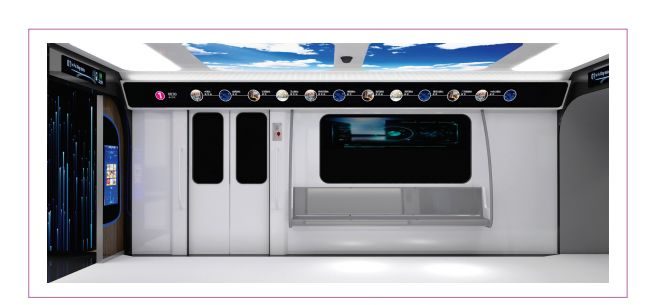
(3) Large Roof Screen Splicing Display: 3-5 55-inch LCD screens are installed on the top of the train carriage, which can use splicing technology to display starry skies, sunny days, creative effects, etc., replacing the monotonous visual effect of the conventional all-white ceiling, creating a more comfortable travel experience. The spliced display of intelligent skylights is shown below.

In the train LCD splicing display architecture, train deployment equipment includes train video controllers, passenger cabin video controllers, train switches, LCD screens, and other devices. This enables centralized control of full-train video playback, zone division, and scene playback through the powerful computing and processing capabilities of the train video controller.
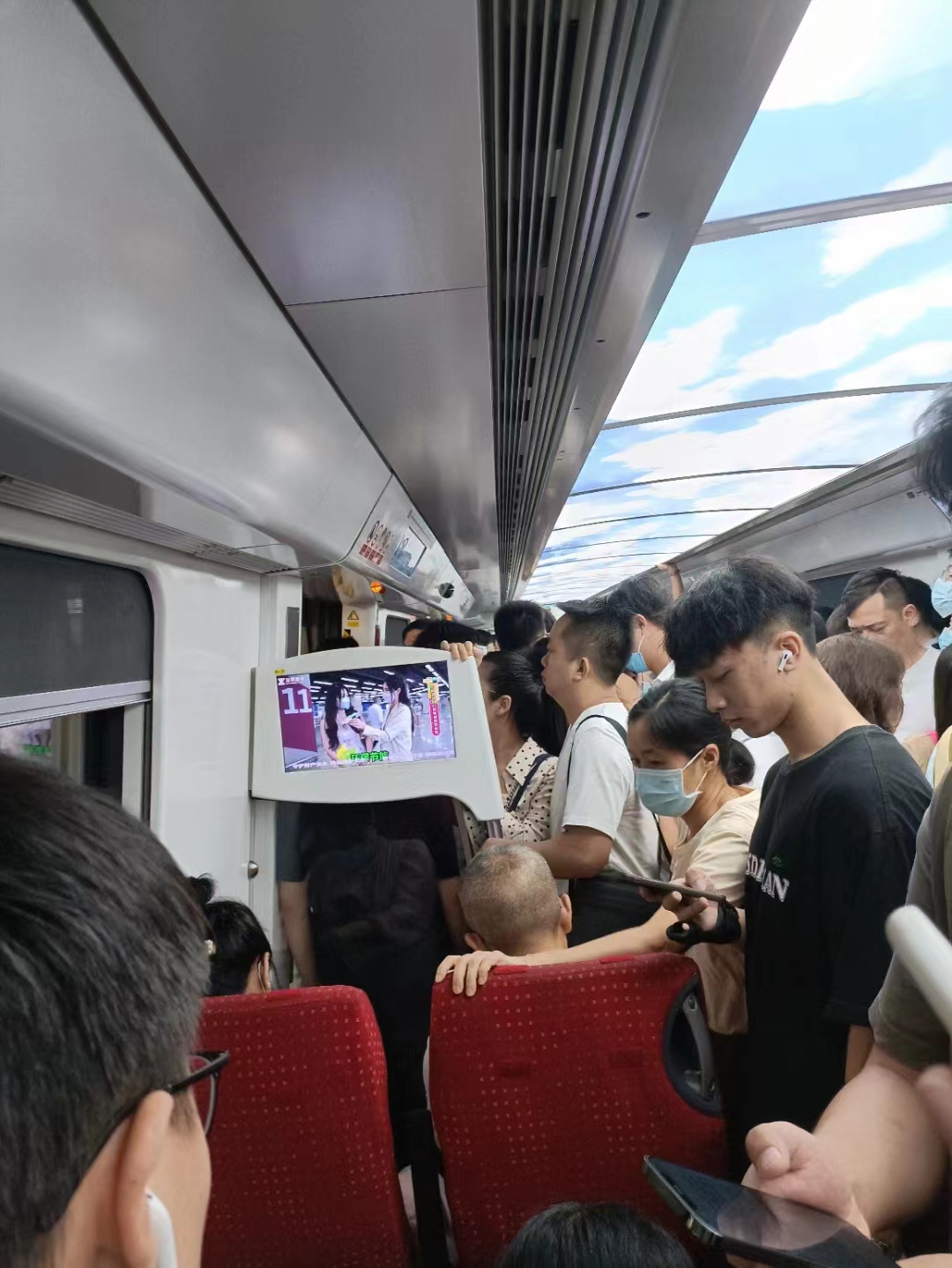
Conclusion
Based on the application characteristics and technical performance indicators of railway trains, and combining the mature market application of LCD splicing display technology, an industrial Ethernet and splicing control network architecture is designed. Under the technical conditions of demonstration application or scientific research demonstration, the reliable installation of train LCD splicing displays is studied. The results show that through customized design, development can be carried out synchronously from architectural design, video resource segmentation, real-time transmission, and related software algorithms. This technology can meet the technical and performance requirements of railway train technology.
Based on this research, the LCD splicing display technology can enhance the scenarios and intelligence of train information display, film and television entertainment, and smart display businesses. It enables the centralized control of multiple video sources, zone division, and scene playback through the strong computing and processing capabilities of the train video controller, laying the foundation for the development of intelligent display businesses. Moreover, this technology has the advantages of low cost, efficient operation, and flexible deployment, and can be conveniently installed and deployed in other areas such as highway tunnels, large underground plazas, and other scenarios, thereby improving the level of intelligence in application scenarios.
